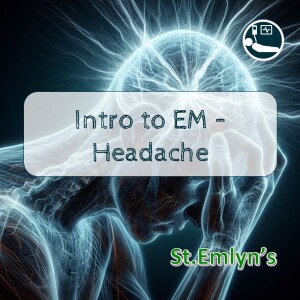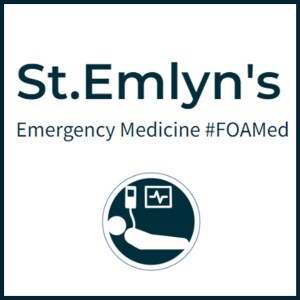
Headaches can be tricky. Many patients experience them as part of various symptomatologies, but our focus here is on those for whom headache is the primary complaint. Our objective is to rule out serious conditions while providing effective management. The major diagnoses to consider include subarachnoid haemorrhage, meningitis, brain tumours, and temporal arteritis.
Subarachnoid Hemorrhage: A Critical Diagnosis
Every emergency physician must be vigilant about subarachnoid haemorrhage (SAH). The classic presentation is a sudden-onset severe headache, often described as being hit on the back of the head with a baseball bat. However, not all patients present with this textbook description. Many just report an incredibly severe headache, sometimes developing over minutes rather than instantaneously.
In such cases, the threshold for investigation should be low. Studies indicate that about 10% of patients presenting to the ED with headaches have a potentially life-threatening condition such as SAH, tumor, or meningitis. This high hit rate underscores the importance of being thorough. Early CT scans are critical. They are more diagnostic the earlier they are performed, and a negative CT can often effectively rule out SAH.
Meningitis: A Subtle but Deadly Threat
Meningitis is another serious condition that can cause a headache. The classic signs include a recent infection, high temperature, neck stiffness, and altered consciousness. However, like SAH, meningitis doesn’t always follow the textbook. Patients may present with milder symptoms, such as neck pain without severe rigidity or general discomfort with light without pronounced photophobia.
Blood tests like white cell count and CRP are not always reliable when considering meningitis. The absence of abnormalities doesn’t rule out the disease. Therefore, empirical treatment with antibiotics is often warranted if there’s any suspicion of meningitis. It’s better to administer antibiotics and later find out they weren’t necessary than to miss a diagnosis and face dire consequences.
Brain Tumors: The Silent Intruders
Brain tumours can present subtly, often with non-specific signs like headaches, which can be easily overlooked. First-time seizures in young adults are a common presentation that warrants a thorough evaluation for tumours. CT scans are typically sufficient to detect most tumours, although in some cases, additional imaging such as MRI or CT angiography may be necessary.
Temporal Arteritis: A Vision-Saving Diagnosis
Temporal arteritis is another condition to consider, particularly in patients over 50. Symptoms include headache, jaw claudication, and visual disturbances. Blood tests such as ESR and CRP are useful here. Early treatment with steroids can prevent irreversible vision loss, making prompt diagnosis and intervention crucial.
Managing Migraines in the ED
Migraines are a common yet often overlooked cause of severe headaches that bring patients to the ED. While not life-threatening, they can be debilitating. Effective management involves hydration, analgesics, anti-emetics, and sometimes 5HT3 receptor antagonists. It’s important to distinguish between first-time migraine presentations and recurrent migraines, especially in older patients, to rule out more serious underlying conditions.
The Role of CT Scans in Headache Management
The advent of CT scanning has revolutionized the management of headaches in the ED. Today, the threshold for performing a CT scan is much lower than it was 15 years ago. Despite concerns about radiation, the benefit of identifying serious conditions outweighs the risks, particularly when about 10% of patients have significant pathology.
Practical Tips for Junior Doctors
For junior doctors, it’s essential to involve senior colleagues in the evaluation and management of patients presenting with headaches. Discussing cases with experienced physicians helps in understanding the rationale behind investigations and management decisions. This collaborative approach ensures comprehensive care and aids in professional development.
Conclusion
Managing headaches in the emergency department requires a careful, systematic approach to rule out life-threatening conditions while providing effective symptom relief. Subarachnoid haemorrhage, meningitis, brain tumours, and temporal arteritis are critical diagnoses that must not be missed. Early CT scans, judicious use of blood tests, and prompt empirical treatment when necessary are key strategies. Remember, thorough evaluation and timely intervention can significantly improve patient outcomes.
More Episodes
 2019-11-02
2019-11-02
 3.0k
3.0k
 2019-10-14
2019-10-14
 11.7k
11.7k
 2019-10-06
2019-10-06
 3.0k
3.0k
 2019-10-05
2019-10-05
 3.1k
3.1k
 2019-09-10
2019-09-10
 4.0k
4.0k
 2019-08-31
2019-08-31
 3.9k
3.9k
 2019-07-14
2019-07-14
 3.9k
3.9k
 2019-07-04
2019-07-04
 4.7k
4.7k
 2019-06-21
2019-06-21
 4.0k
4.0k
 2019-06-07
2019-06-07
 6.3k
6.3k
 2019-05-30
2019-05-30
 4.4k
4.4k
 2019-05-19
2019-05-19
 4.9k
4.9k
 2019-05-01
2019-05-01
 4.5k
4.5k
 2019-04-24
2019-04-24
 3.7k
3.7k
 2019-04-13
2019-04-13
 3.7k
3.7k
 2019-04-10
2019-04-10
 4.1k
4.1k
 2019-02-23
2019-02-23
 4.2k
4.2k
Create your
podcast in
minutes
- Full-featured podcast site
- Unlimited storage and bandwidth
- Comprehensive podcast stats
- Distribute to Apple Podcasts, Spotify, and more
- Make money with your podcast
It is Free
- Privacy Policy
- Cookie Policy
- Terms of Use
- Consent Preferences
- Copyright © 2015-2024 Podbean.com




